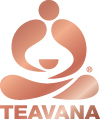 Teavana Holdings, Inc. (NYSE: TEA) has seen its quiet period come to an end today, making the analyst community that works for the companies which did the underwriting free to initiate their research calls on the company. Usually this is a good thing that investors look forward to. Not today. The ratings and the targets are below, but more important is the news development since the IPO with its earnings and valuations:
Teavana Holdings, Inc. (NYSE: TEA) has seen its quiet period come to an end today, making the analyst community that works for the companies which did the underwriting free to initiate their research calls on the company. Usually this is a good thing that investors look forward to. Not today. The ratings and the targets are below, but more important is the news development since the IPO with its earnings and valuations:
- Bank of America/Merrill Lynch started coverage with a neutral rating.
- Goldman Sachs initiated the company with a Neutral rating and a $25 price target.
- Morgan Stanley initiated with a Equal-Weight rating.
- Piper Jaffray initiated coverage with a Overweight rating and $27 price target.
- Stifel Nicolaus initiated coverage with a Hold rating.
- William Blair initiated coverage with a Outperform rating.
The company just last week conducted its first earnings call since the IPO. It has also recently scored a pact with the Alshaya group of companies to develop Teavana stores throughout the Middle East and the first store is set to open next year.
Teavana reported net income of $0.03 EPS or $1 million in the first quarter, up from $0.02 EPS or $579,000 a year earlier, but revenue was up 36% to $31.3 million. Its same-store sales were also up 8.7% (up 6.9% outside of online). Teavana’s guidance for the year is $0.42 to $0.44 EPS on $160 to $164 million in 2011 sales, with mid-single digit sales gains during the second half of 2011.
Here is the problem, but admittedly this is a problem with many new retail and food-themed growth businesses… The stock trades at about 50-times expected earnings. So, what is a fair earnings growth rate and sales growth rate for the company to support a $868 million market capitalization?
Teavana has about 179 company-owned stores, it opened 18 new stores during the last quarter, and it still hopes to turn the 33 opened this year into a total of 50 new stores.
When the company was still about to come public, it set the IPO terms that were good for the company but not so good for the post-IPO shareholders by our take. Shares priced at an even-higher $17 per share but that price has never been seen since and the stock was quickly up more than 50%.
Our take is that the old range of $13 to $15 would have been a far more attractive price even than the $17 price. Of course that seems obvious, but the hype was just too much here even if a lot of the drop and the sentiment was due to the end of July to August stock market selling.
Shares are down almost 5% today at $22.83 and the post-IPO range has been $20.28 to $29.35.
JON C. OGG
Want to Retire Early? Start Here (Sponsor)
Want retirement to come a few years earlier than you’d planned? Or are you ready to retire now, but want an extra set of eyes on your finances?
Now you can speak with up to 3 financial experts in your area for FREE. By simply clicking here you can begin to match with financial professionals who can help you build your plan to retire early. And the best part? The first conversation with them is free.
Click here to match with up to 3 financial pros who would be excited to help you make financial decisions.
Have questions about retirement or personal finance? Email us at [email protected]!
By emailing your questions to 24/7 Wall St., you agree to have them published anonymously on a673b.bigscoots-temp.com.
By submitting your story, you understand and agree that we may use your story, or versions of it, in all media and platforms, including via third parties.
Thank you for reading! Have some feedback for us?
Contact the 24/7 Wall St. editorial team.